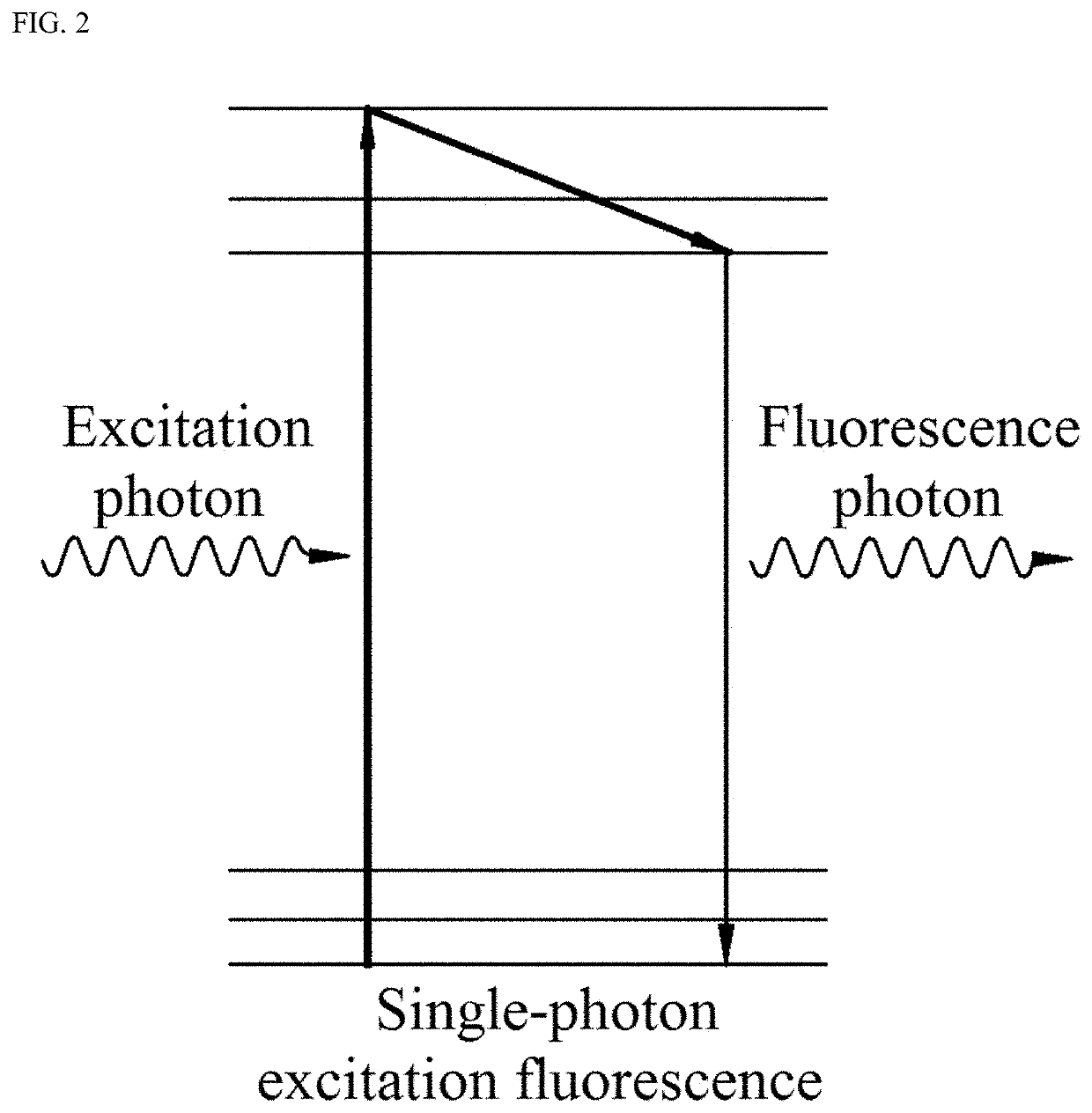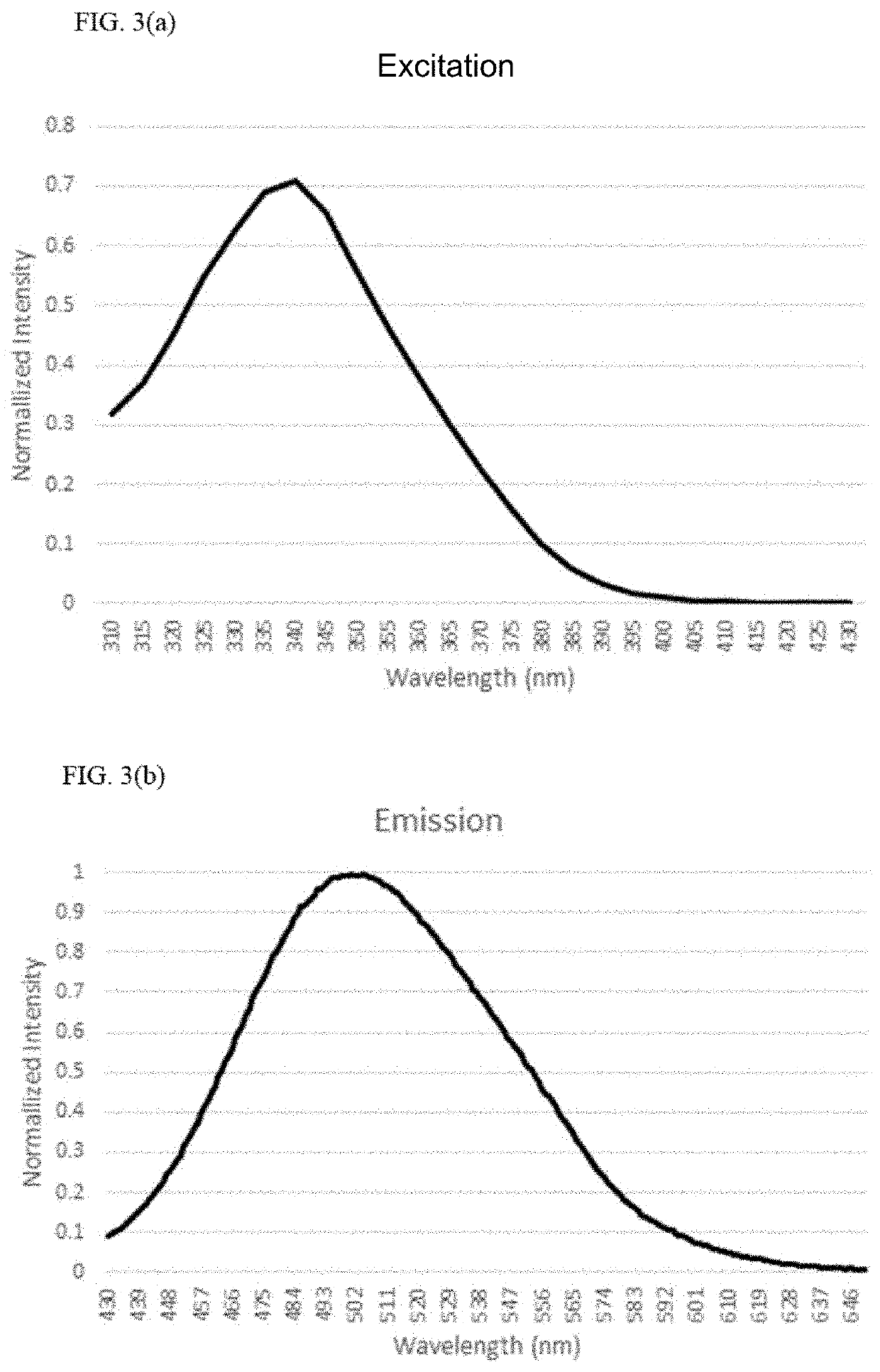Fluorescence endoscopic method for visualization of colorectal tissue using fluoroquinolone antibiotics and method for diagnosis of lesions of colorectal tissue using the same
- Summary
- Abstract
- Description
- Claims
- Application Information
AI Technical Summary
Benefits of technology
Problems solved by technology
Method used
Image
Examples
experimental example 1
Photographing of Extracted and Moxifloxacin-Stained Colorectal Tissue of Mouse
[0086]FIG. 4(a), FIG. 4(a1) and FIG. 4(b) are images of extracted and moxifloxacin-stained colorectal tissue of a mouse, obtained by the fluorescence endoscopic method for visualization of colorectal tissue using fluoroquinolone antibiotics according to the present invention.
[0087]FIG. 4(a) and FIG. 4(a1) are confocal fluorescence microscopy images of the moxifloxacin-stained colorectal tissue of the mouse. Referring to FIG. 4(a) and FIG. 4(a1), goblet cells of the colorectal tissue stained with moxifloxacin were fluorescence-excited and emitted light, whereby the crypt and goblet cells of the colorectal tissue could be observed.
[0088]FIG. 4(b) is a high-magnification fluorescence microscopy image of the moxifloxacin-stained colorectal tissue of the mouse. Referring to FIG. 4(b), goblet cells of the colorectal tissue stained with moxifloxacin were fluorescence-excited and emitted light, whereby the crypt a...
experimental example 2
Photographing of Moxifloxacin-Stained Colorectal Tissue of Living Mouse
[0090]FIG. 5(a), FIG. 5(a1), FIG. 5(b), and FIG. 5(b1) are images of moxifloxacin-stained colorectal tissue of a living mouse, obtained by the fluorescence endoscopic method for visualization of colorectal tissue using fluoroquinolone antibiotics according to the present invention.
[0091]FIG. 5(a) is a confocal fluorescence microscopy image of the moxifloxacin-stained colorectal tissue of the mouse and FIG. 5(a1) is an enlarged (high-magnification) image of a part of FIG. 5(a). Referring to FIG. 5(a) and FIG. 5(a1), goblet cells of the colorectal tissue stained with moxifloxacin was fluorescence-excited and emitted light, whereby the crypt and goblet cells of the colorectal tissue could be observed.
[0092]FIG. 5(b) is a high-magnification fluorescence microscopy image of the moxifloxacin-stained colorectal tissue of the mouse and FIG. 5(b1) is an enlarged (high-magnification) image of a part of FIG. 5(b). Referring...
experimental example 3
Photographing of Moxifloxacin-Stained Colorectal Tissue of Living Mouse Ingesting DSS
[0094]FIG. 6(a), FIG. 6(a1), FIG. 6(b), and FIG. 6(b1) are images of moxifloxacin-stained colorectal tissue of a mouse ingesting dextran sodium sulfate (DSS), obtained by the fluorescence endoscopic method for visualization of colorectal tissue using fluoroquinolone antibiotics according to the present invention.
[0095]FIG. 6(a) is a confocal fluorescence microscopy image of the moxifloxacin-stained colorectal tissue of the mouse and FIG. 6(a1) is an enlarged (high-magnification) image of a part of FIG. 6(a). Referring to FIG. 6(a) and FIG. 6(a1), it could be observed that, in the colorectal tissue of the mouse ingesting DSS, there was no light emission from cells due to collapse of the crypt or destruction of the goblet cells caused by DSS.
[0096]FIG. 6(b) is a high-magnification fluorescence microscopy image of the moxifloxacin-stained colorectal tissue of the mouse and FIG. 6(b1) is an enlarged (hi...
PUM
| Property | Measurement | Unit |
|---|---|---|
| wavelength band | aaaaa | aaaaa |
| wavelength | aaaaa | aaaaa |
| fluorescence | aaaaa | aaaaa |
Abstract
Description
Claims
Application Information
 Login to View More
Login to View More - R&D
- Intellectual Property
- Life Sciences
- Materials
- Tech Scout
- Unparalleled Data Quality
- Higher Quality Content
- 60% Fewer Hallucinations
Browse by: Latest US Patents, China's latest patents, Technical Efficacy Thesaurus, Application Domain, Technology Topic, Popular Technical Reports.
© 2025 PatSnap. All rights reserved.Legal|Privacy policy|Modern Slavery Act Transparency Statement|Sitemap|About US| Contact US: help@patsnap.com



